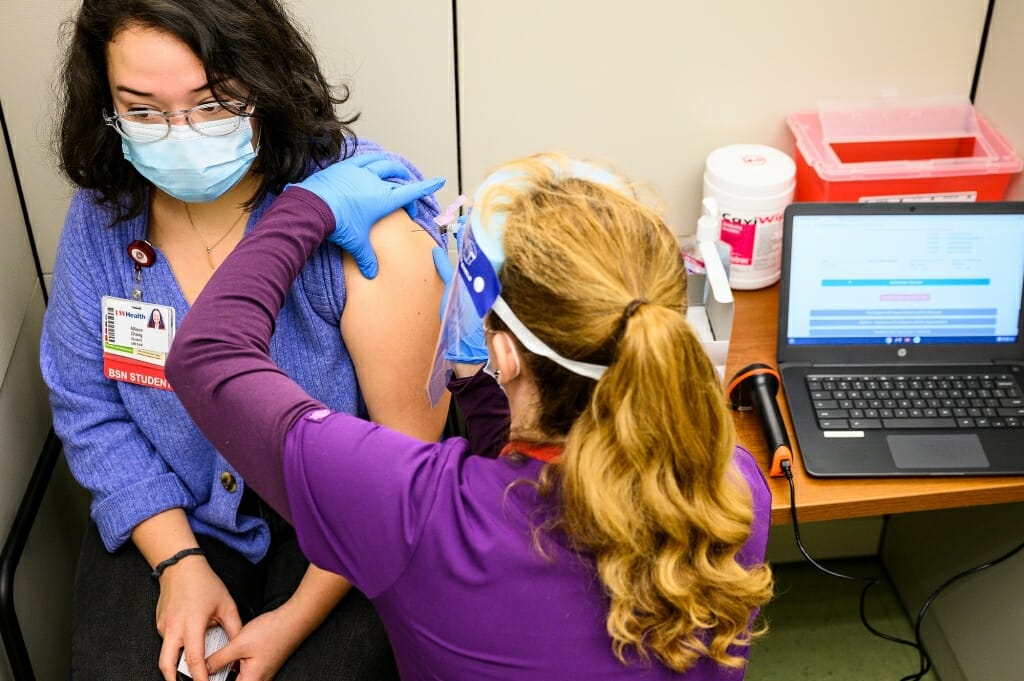UW researchers develop tool to equitably distribute limited vaccines

Nurse Nicole Metko, right, vaccinates nursing student Allison Chang with the first of a two-dose shot of the Moderna COVID-19 vaccine. Photo: Jeff Miller
The demand for COVID-19 vaccines continues to outpace supply, forcing public health officials to decide who should be first in line for a shot, even among those in the same pool of eligible vaccine recipients.
To assist these efforts, researchers at the University of Wisconsin School of Medicine and Public Health and UW Health have developed a tool that incorporates a person’s age and socioeconomic status to prioritize vaccine distribution among people who otherwise share similar risks due to their jobs. The tool helps identify those who are at greater risk of severe complications or death from COVID-19.
UW Health has implemented the prioritization algorithm to equitably provide limited doses to frontline health care workers. Other organizations can also access the freely available tool to guide their own vaccine distribution plans.
While the UW–Madison tool was designed with the first phase of eligible recipients in mind, it could be used as vaccine distribution expands to larger populations. As the eligible population increases, the gap between initial supply and demand could grow, making such prioritization tools even more helpful.
“Knowing we’re going to have limited vaccine for some time, we wanted to develop an algorithm to equitably distribute vaccinations within these risk groups,” says Grace Flood, the director of clinical analytics and reporting in the Office of Population Health at UW Health, who helped lead development of the tool along with the Health Innovation Program within SMPH.
In addition to age, the algorithm uses the Social Vulnerability Index to measure a person’s susceptibility to severe COVID-19 based on where they live. The Centers for Disease Control and Prevention developed the SVI metric to help emergency responders identify which neighborhoods and towns will require the most support following natural disasters or public health emergencies.
The SVI incorporates 15 measures in four categories: socioeconomic status, housing composition and disability, minority status and language, and housing and transportation. Race and ethnicity have been closely correlated with higher COVID-19-related hospitalizations and mortality.
Flood and her team incorporated the SVI in accordance with a report by the National Academies of Sciences, Engineering and Medicine that recommended using the index to fairly distribute vaccines. Because Wisconsin publishes data about COVID-19 deaths at the census-tract level, “we were able to determine the relationship for risk of mortality between age and SVI,” says Flood. This relationship allowed the researchers to verify that age and SVI combined provide an accurate estimate of an individual’s risk.
Since age and SVI are readily available pieces of information about an individual and each contributes to COVID-19 risk, an algorithm that incorporates both elements may serve as one of the best ways to distribute vaccines until supply catches up to demand, says Flood.
The researchers have published their algorithm in the Annals of Family Medicine COVID-19 collection and made it available for download on the project’s website.



